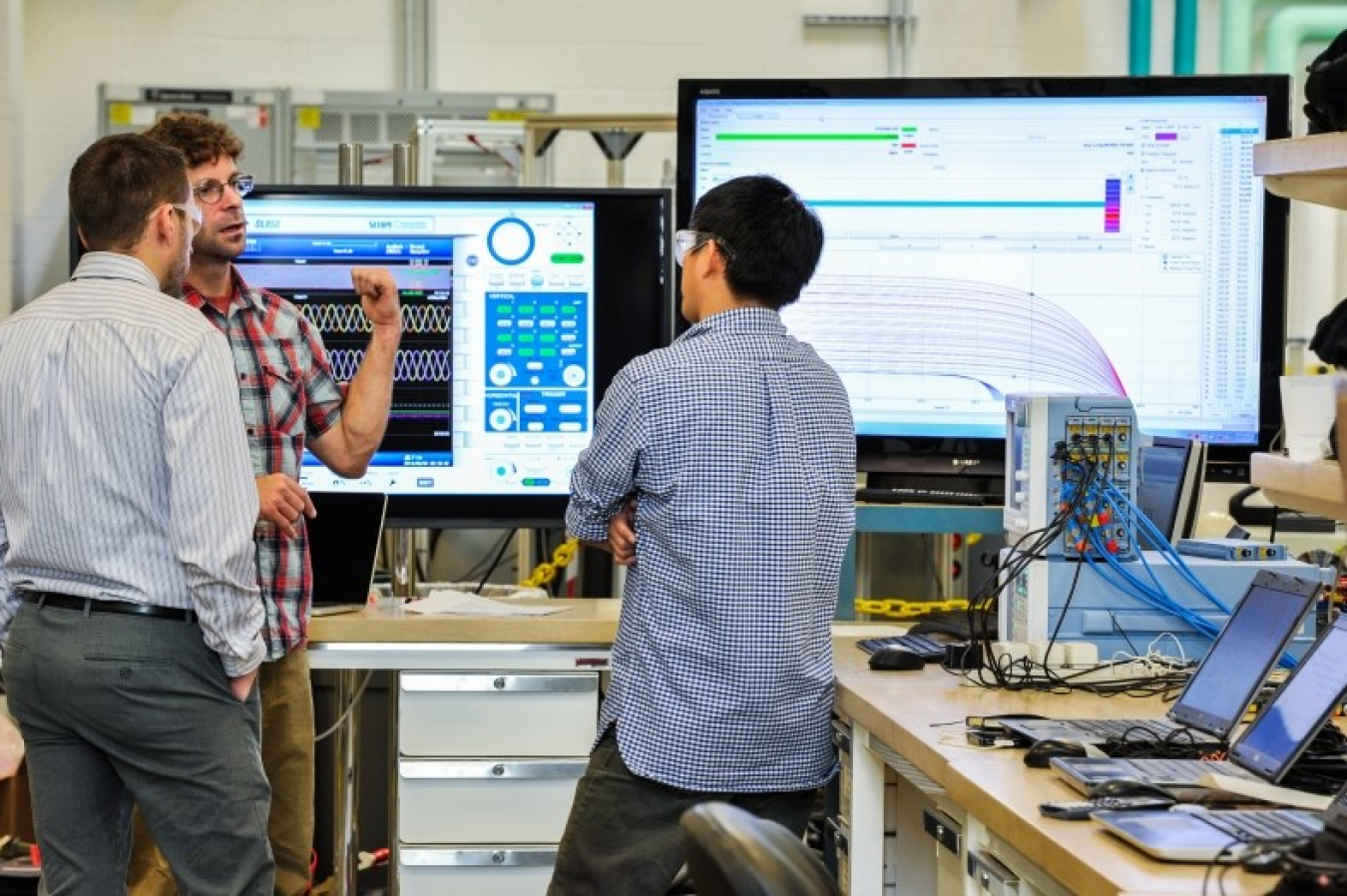
National Renewable Energy Laboratory engineer Greg Martin (from left) works with Solectria engineers Jonathon Smith and Jihua Ma testing Solectria's smart inverter at the Energy Systems Integration Facility in Golden, Colorado. | Photo by Dennis Schroeder, National Renewable Energy Laboratory
Thanks to a SunShot collaboration at the Energy Department’s National Renewable Energy Laboratory (NREL), in December 2015 Hawaiian Electric announced that more than 2,500 customers connected their solar power systems to the electrical grid. This partnership between NREL, Hawaiian Electric Company, and SolarCity was funded by the Energy Department’s SunShot Initiative and helped researchers and utilities better understand how to use solar technologies in a safe, reliable, and cost effective way.
In 2014, on average, solar customers across Hawaii fed about 20 times more solar power into Hawaii’s electric grid than their counterparts on the mainland United States. As a result, there were more than 2,700 homes on circuits that were exceeding the minimum day-time load and were unable to connect to the grid. In order to resolve this issue, Hawaiian Electric and SolarCity collaborated with NREL to test advanced photovoltaic (PV) inverters at the Energy Systems Integration Facility (ESIF) in Golden, CO.
The project used advanced computer modeling software to analyze and address high-penetration solar scenarios. Because PV inverters convert direct-currents—in this case solar power—into alternating currents that are then used by the electric grid, they help utility system operators pinpoint solar generation levels. When generation levels peak mid-day when it’s sunniest, the risk of solar generation exceeding load demand increases, which could result in over-voltage, reverse power flow, and cause service disruptions.
Leveraging ESIF’s broad array of capabilities NREL researchers tested and analyzed the behaviors of PV inverters while connected to a power grid simulator.
The results helped SolarCity and Hawaiian Electric determine how the loss of a power plant or a large load tripping offline would impact the grid. In December 2014, the team completed load rejection overvoltage tests and continued later that year to test ground fault overvoltage. This research generated the computer models, PV inverter testing methods and test results that Hawaiian Electric would ultimately use to approve new solar power systems and connect them to the grid.
As a result of this work, more than 2,500 Hawaiian Electric solar customers were able to connect to the grid from October 2014 to March 2015. NREL engineers continued testing with Hawaiian Electric and SolarCity through October 2016, helping to further reduce interconnection queues in Hawaii and contribute updates to interconnection standards such as IEEE Standard 1547. As most of the utilities in U.S. use this standard when connecting distributed energy resources such as PV to the grid, NREL’s work in Hawaii helped the rest of the country maximize its solar penetration levels, making way for a future where solar is an even greater share of the U.S. electricity mix.
Learn more about the SunShot Initiative’s Systems Integration program.
